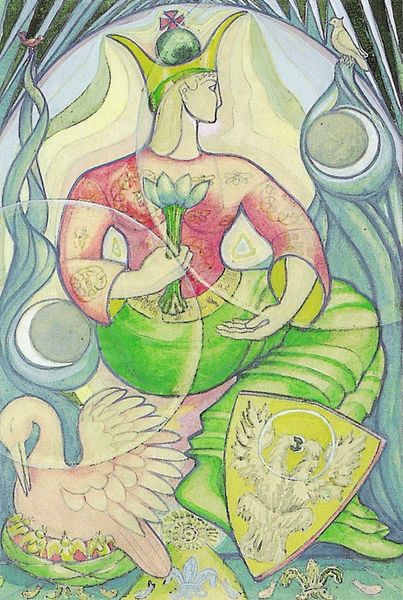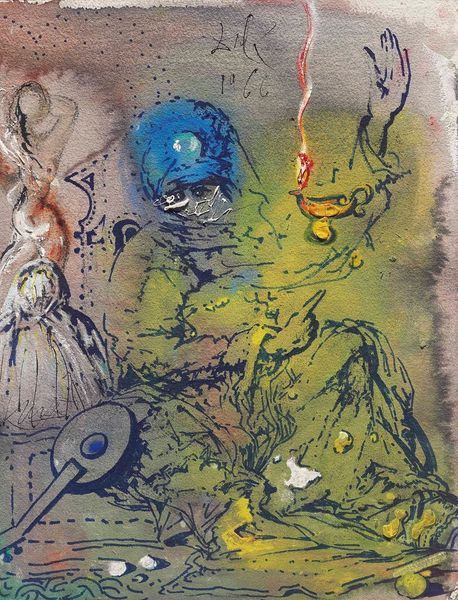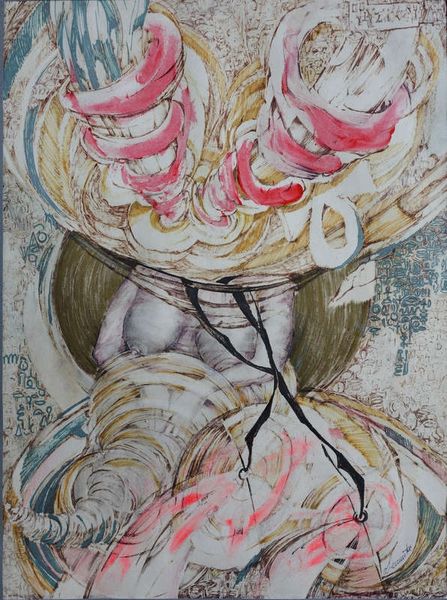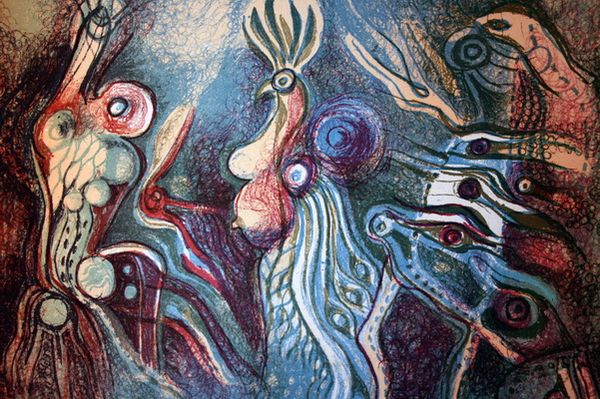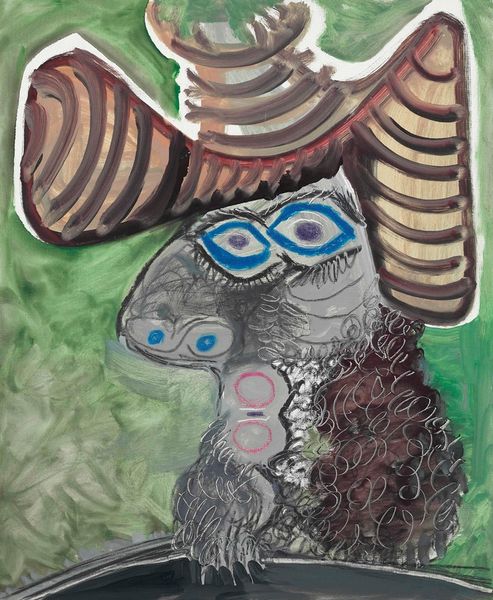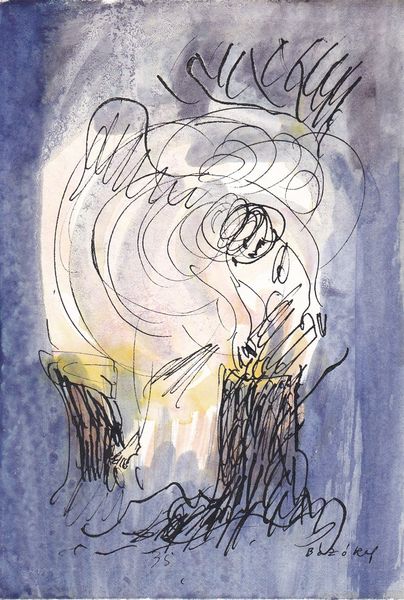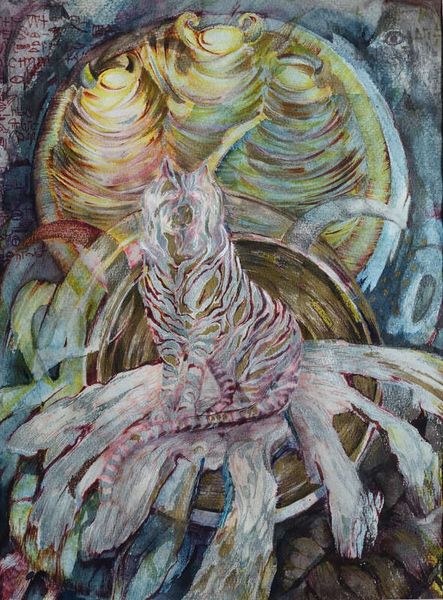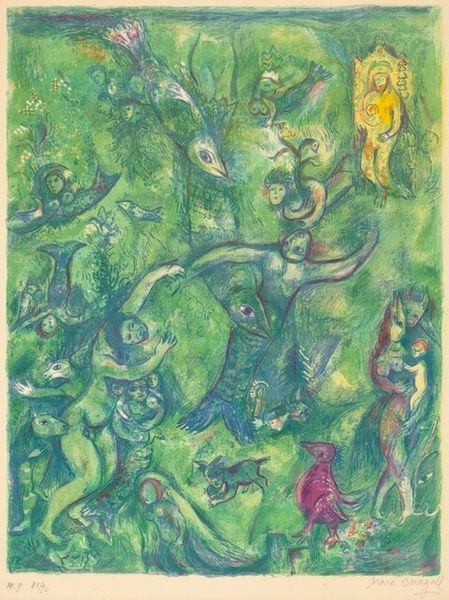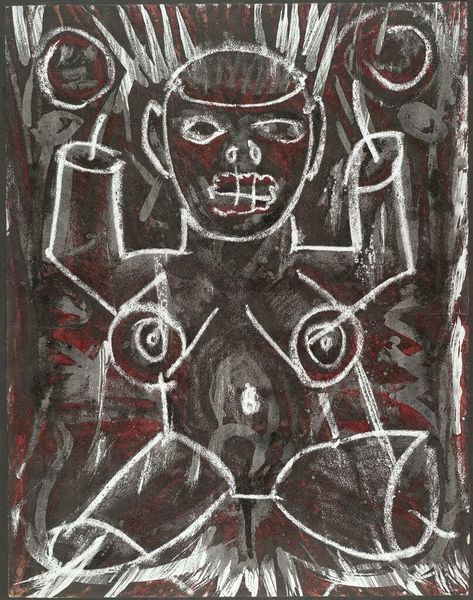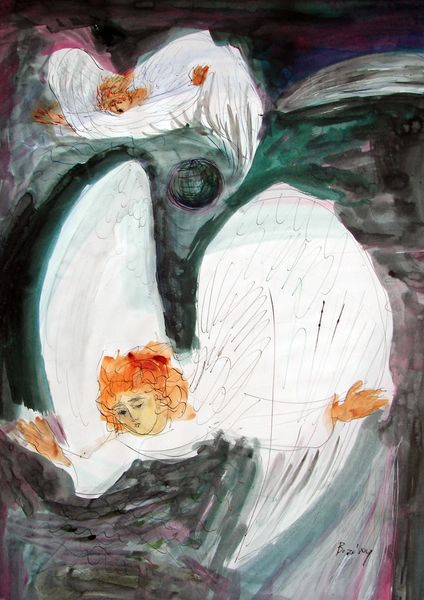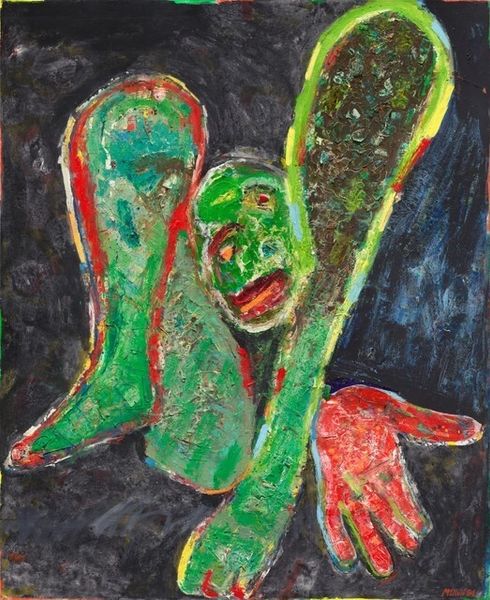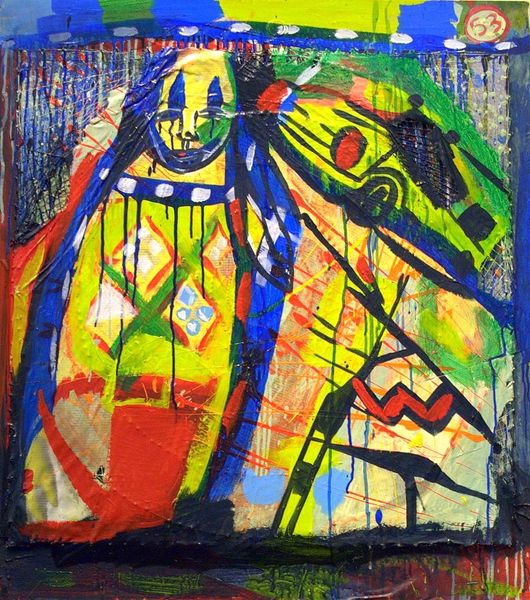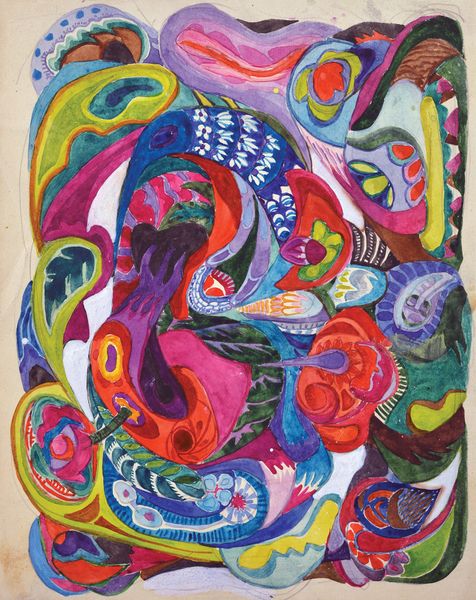
Copyright: Modern Artists: Artvee
Editor: Here we have Pablo Picasso’s "Le Baiser," painted in 1969 using acrylic. It has an intense energy, the figures are almost confrontational in their embrace. What symbols are at play here? Curator: Look at how Picasso distorts and reassembles the faces. This isn't just about physical representation. It speaks to the breakdown of traditional perspectives. In this period of his life, Picasso revisited earlier themes and styles with a renewed sense of freedom and irony. Do you see any connection between this painting and, say, ancient fertility symbols? Editor: I didn’t notice that before. I guess the exaggerated features – like the breasts – could point towards fertility. So is Picasso making a statement about primal urges? Curator: Perhaps. Consider the period: 1969, a time of societal upheaval and questioning of norms. The intense, almost grotesque, depiction of intimacy might be a commentary on the changing landscape of love and sexuality. Are they kissing or devouring each other? Look at the color palettes he chooses, a crude expression for human interaction perhaps? Editor: So, the painting captures a broader cultural shift in attitudes toward intimacy, a mirror to a changing world? It feels more complex than just a simple kiss now. Curator: Precisely. Symbols, visual cues – they all accumulate layers of meaning over time. What appears shocking now might reveal hidden truths about who we were and what we valued. Editor: I will certainly look more deeply into what I perceive as simple imagery from now on. Thanks! Curator: And I’m reminded of the importance of seeing the familiar through fresh eyes. A kiss, indeed, can be so much more.
Comments
No comments
Be the first to comment and join the conversation on the ultimate creative platform.
